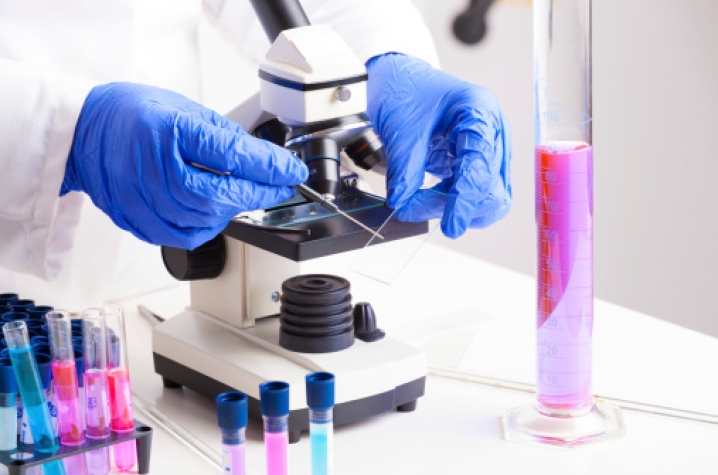New UK Study Shows Insight into Breast Cancer Cell Migration

LEXINGTON, Ky. (Oct. 25, 2013) — A new study by University of Kentucky Markey Cancer Center researchers Min Chen and Kathleen O’Connor shows that a specific protein may assist breast cancer cells in metastasizing.
Tumor cells escape a primary tumor by a process called invasion. This process of invasion requires cells to migrate or move through tissue. This process is controlled by the restructuring of the actin cytoskeleton.
Signal transduction through the Rho-ROCK pathway can regulate the reorganization of the actin cytoskeleton such that it can form membrane ruffles at the front of a cell, which is used to efficiently move the cell forward, and form strong tension fibers (often referred to as stress fibers) within the body of the cell.
Published in Oncogene, the study found that a metastasis-associated protein known as S100A4 or metastasin can switch Rho function from making stress fibers to creating membrane ruffles.
Stress fibers are associated with non-motile cells, while their absence when coupled with the presence of membrane ruffles at the leading edge of cells is associated with cell migration and tumor invasion.
"Finding that S100A4 changes how Rho functions is a huge breakthrough and helps us to understand better how these two proteins contribute to metastasis," said O'Connor, professor in the Department of Molecular and Cellular Biochemistry at UK. "My lab is continuing to figure out just how these two proteins interact to drive invasion and metastasis. We are using this information to design better therapies for cancer patients. Currently, we do not have drugs that combat tumor invasion or metastasis despite the fact that metastasis is the major cause of cancer patient deaths. It is our hope that soon we will determine how to use selective drugs to target these pathways and improve the lives of cancer patients."
The ability of a cell to invade more efficiently leads to increased rates of metastasis. Up until this point, how the Rho-ROCK pathway could promote both functions was unknown.




